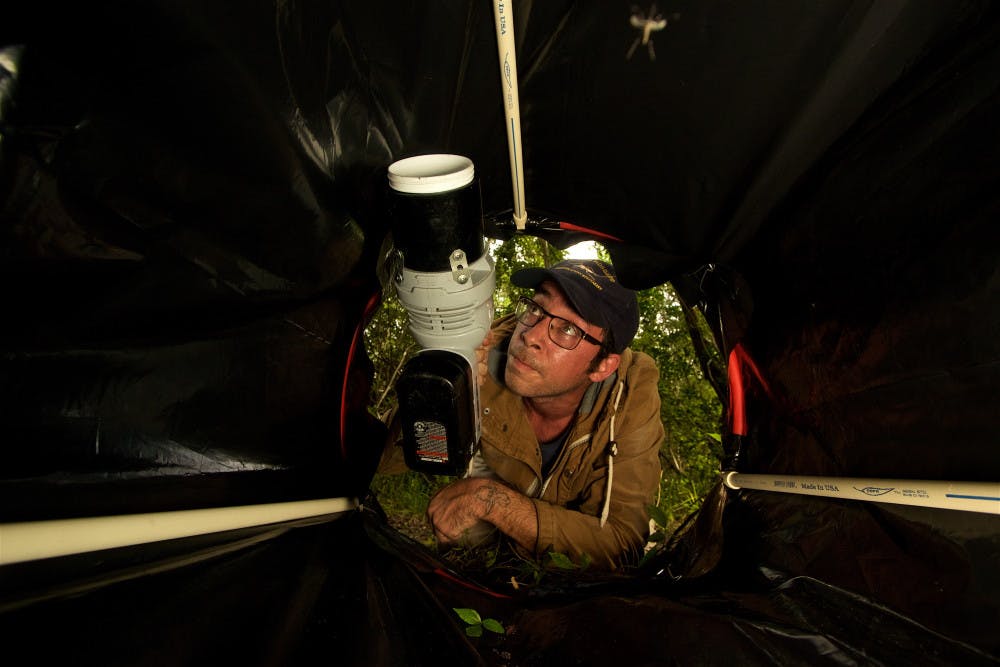Lawrence E. Reeves used to spend his mornings in a Gainesville enclosure with a handheld vacuum in one hand and a piece of cardboard in the other.
He had to be working before the sun’s heat loosened the handmade traps he used to catch his blood-sucking friends, the 35-year-old said.
Part of his morning routine two years ago was checking the cylindrical traps made out of wire fencing and a garbage bag, and shaking each one like dice in a Yahtzee cup to wake up the mosquitoes buzzing within.
Reeves studied their DNA to see if Florida mosquitoes bit invasive Burmese pythons. For his research, which was published Jan. 17, he captured mosquitoes to see if they had fed on pythons in the area. That information would tell him whether or not pythons were in the area to track the species’ location.
Reeves conducted this experiment from the end of 2015 to the end of 2016. By tracking where mosquitoes bite the snakes, he could find where they were living in the Everglades.
“The python populations are expanding northward,” said Reeves, “so going into the future, it’s going to be really important to monitor their spread and determine where they occur.”
The brown snakes arrived in the Florida wilderness prior to the 1980s by pet owners releasing them into the wild, Reeves said. The invasive species decimated local animals by preying on them.
For example, pythons have reduced raccoon populations so much that turtle and alligator eggs, a main food source for raccoons, are have higher survival rates, he said.
Reeves said it’s hard to determine an estimate of how many pythons are in the Everglades because they’re hard to find.
“There’s definitely at least 10,” he said. “But people generally agree that there’s a very large number.”
Jennifer L. Gillett-Kaufman, a UF associate extension scientist and one of Reeves’ supervisors, said she discussed the idea with him and helped lay out a timeline to complete the work for his doctorate. Seven members tackled the project with a team approach, she said.
“The coolest part to me was really being able to come up with something that would showcase to the public how important it is to monitor and manage for invasive species,” she said.
Now as a postdoctoral researcher at UF’s Institute of Food and Agricultural Sciences’ Florida Medical Entomology Lab in Vero Beach, Reeves is putting his research to the test in the Everglades. He said he’s collected about 1,000 mosquitoes so far.
“We’re processing to figure out what animals they’ve been feeding on,” he said.
Lawrence E. Reeves, 35, spent a little more than a year in a controlled studying the DNA of Florida mosquitoes to see if they bit invasive Burmese pythons. He’s now a postdoctoral researcher at UF’s Institute of Food and Agricultural Sciences’ Florida Medical Entomology Lab in Vero Beach, Florida, where he is testing his research in the Everglades.





![Photo of the missing Leachianus “Leachie” gecko. [Photo courtesy of Mike Southwick]](https://snworksceo.imgix.net/ufa/907bd92a-0b29-40eb-a5fb-d7db7cf98b2f.sized-1000x1000.jpg?w=1500&ar=16%3A9&fit=crop&crop=faces&facepad=3&auto=format)
